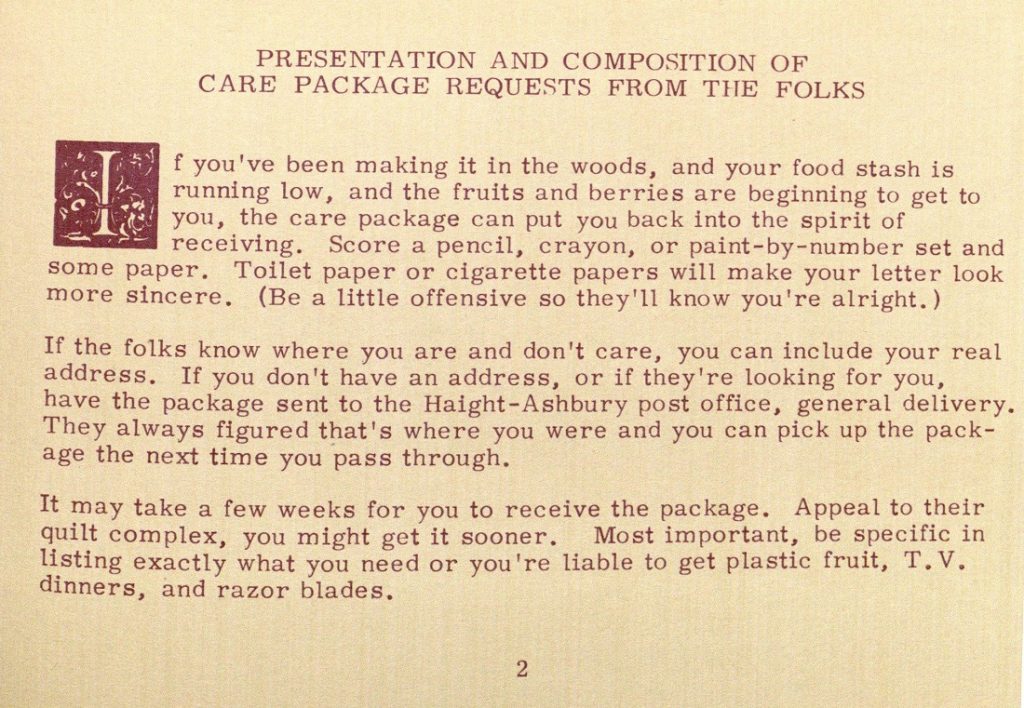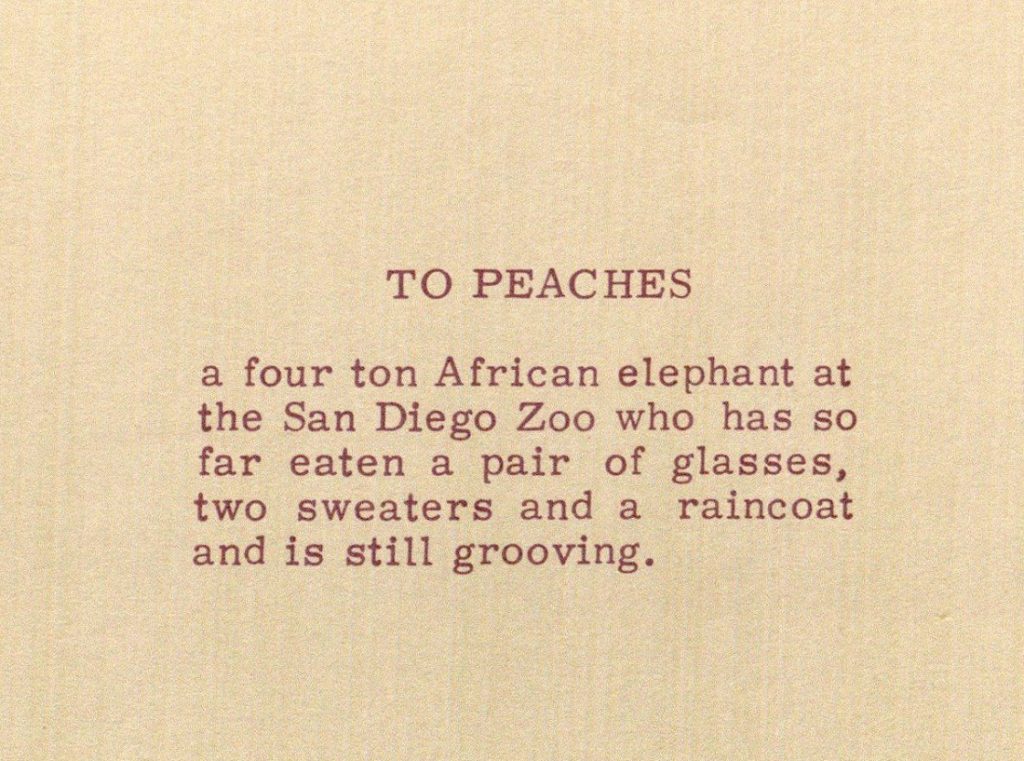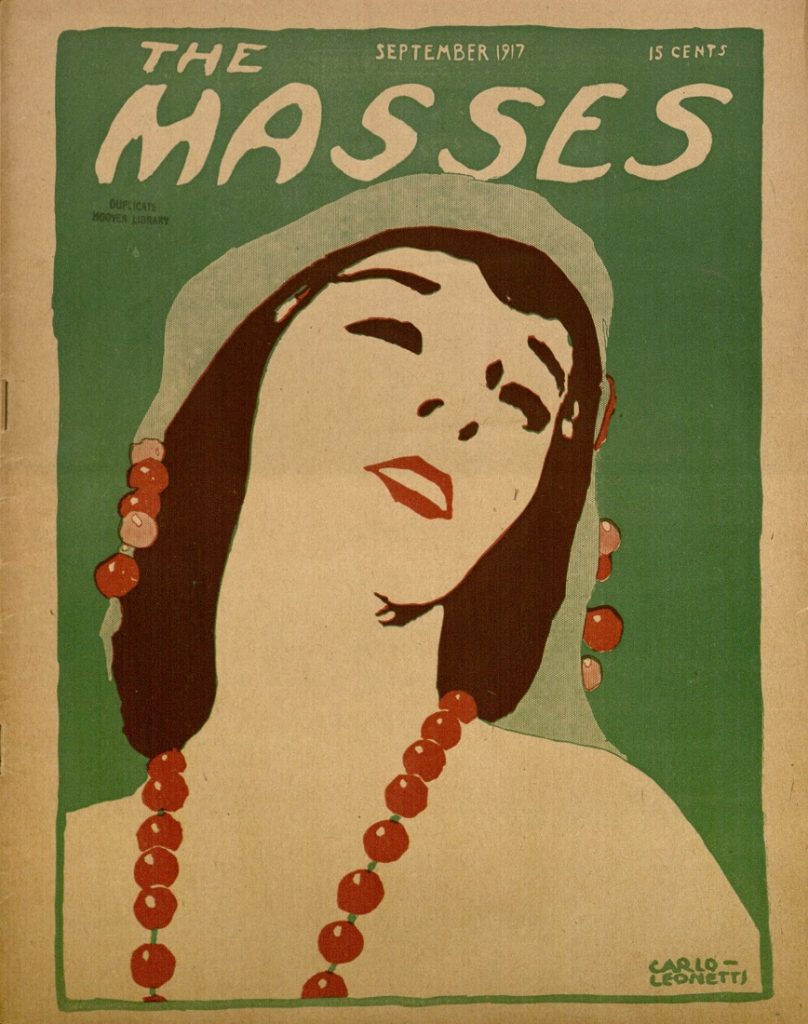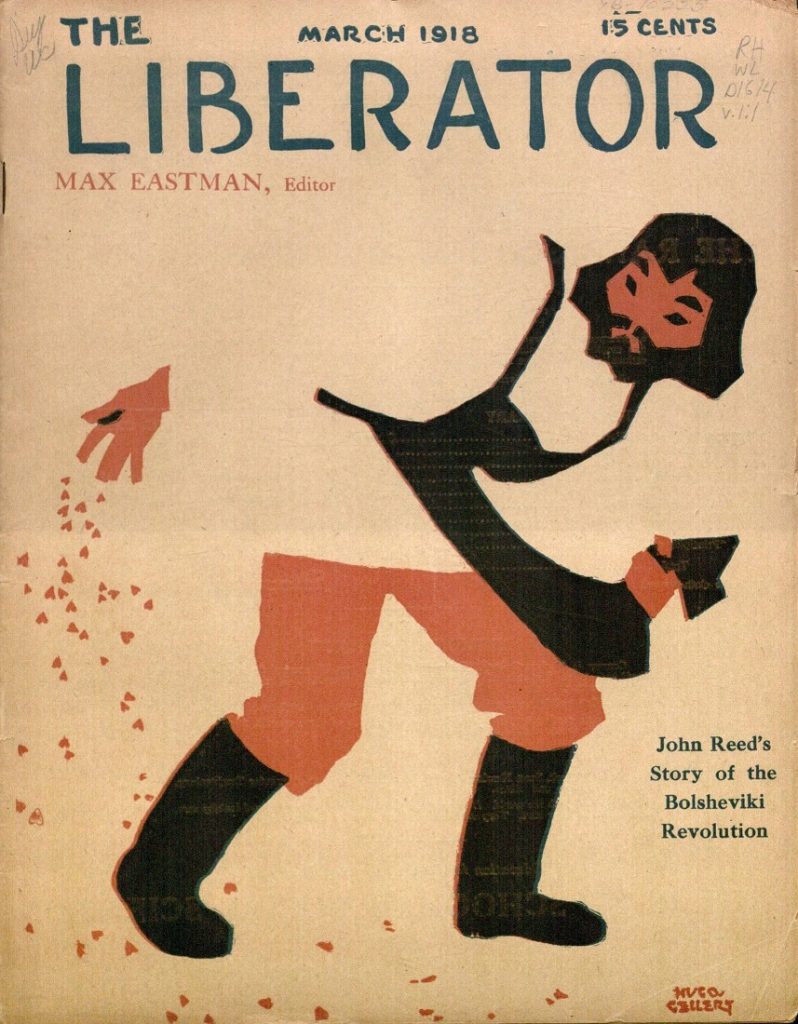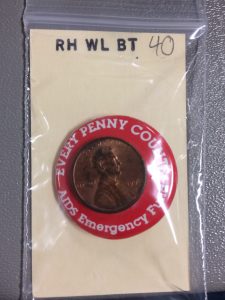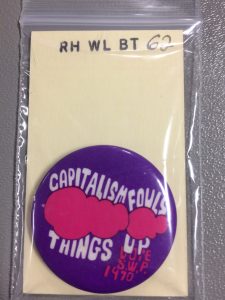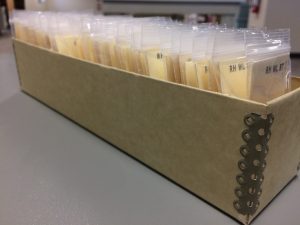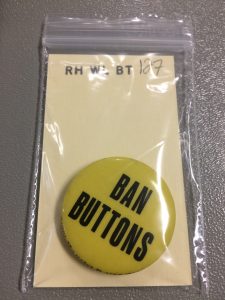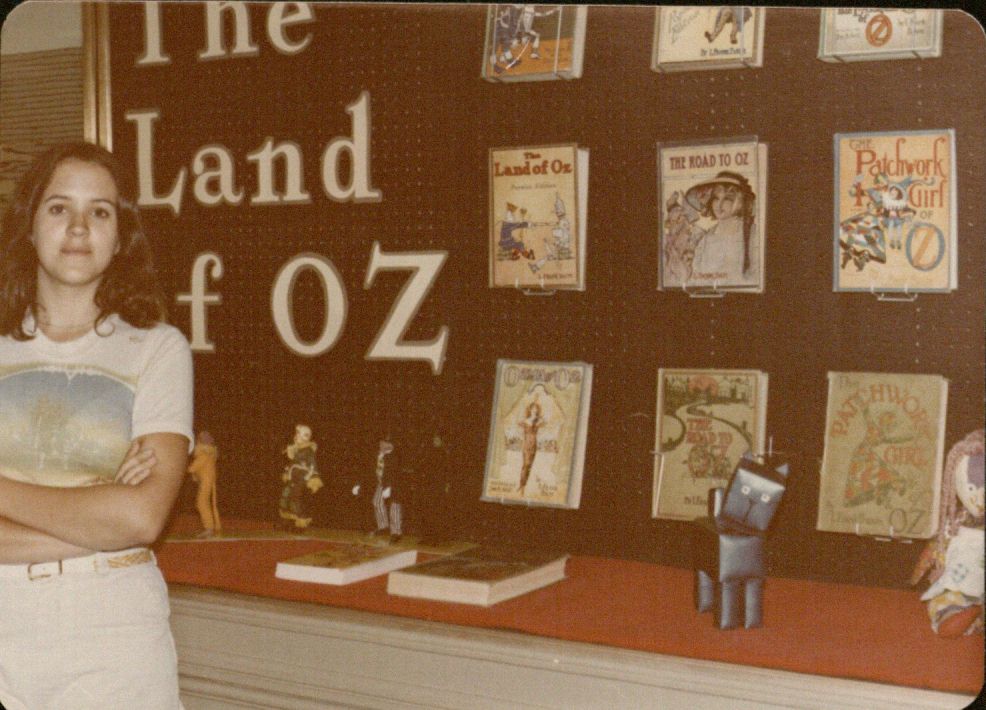The Hippie Cookbook
April 20th, 2018Just when you might think you have a solid understanding of the range of materials in the holdings at Kenneth Spencer Research Library, they surprise you. A recent addition to the Wilcox Collection of Contemporary Political Movements, which brings together U.S. political literature and documents, is a terrific (and somewhat humorous) example: The Hippie Cookbook, or, Don’t Eat Your Food Stamps was authored by Gordon and Phyllis Grabe and published in 1970 by the Paisley Shawl Publishing Company of Forestville, California.
Cover of The Hippie Cookbook, or, Don’t Eat Your Food Stamps, 1970.
Call Number: RH WL AK105. Click image to enlarge.
Recipes in The Hippie Cookbook range from average fare such as cheesecake (page 25) and stuffed bell peppers (page 57) to hippie lifestyle-specific dishes such as “Paddy Wagon Rice Patties,” which are “good hot or cold and can be carried with you as quick snacks for emergency eating” (page 11). Other dishes are unremarkable in their ingredients but have intriguing titles such as “Peace Pancakes” (page 14) and “Good Karma Casserole” (page 67).
Recipe for peace pancakes in The Hippie Cookbook. Call Number: RH WL AK105.
Click image to enlarge.
Included in The Hippie Cookbook are sections offering advice on hippie food preparation, including “Brown Bagging for Peace Marches” (page 10), “Cooking in the Nude” (page 24), and “Presentation and Composition of Care Package Requests from the Folks” (page 2).
Instructions for requesting and receiving care packages “from the folks”
in The Hippie Cookbook. Call Number: RH WL AK105. Click image to enlarge.
In addition, shorter “hippie hints” are included throughout the text. As an example, Hippie Hint No. 9 advises that “if you burn your dinner put butter on it” (page 90).
But perhaps my favorite feature is the book’s dedication, which reads: “TO PEACHES: A four ton African elephant at the San Diego Zoo who has so far eaten a pair of glasses, two sweaters and a raincoat and is still grooving.”
The dedication to Peaches in The Hippie Cookbook. Call Number: RH WL AK105.
Click image to enlarge.
Sarah Polo
Public Services Student Assistant



